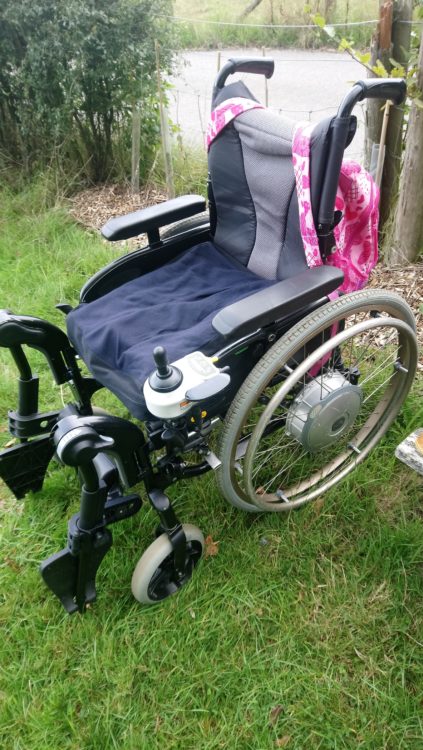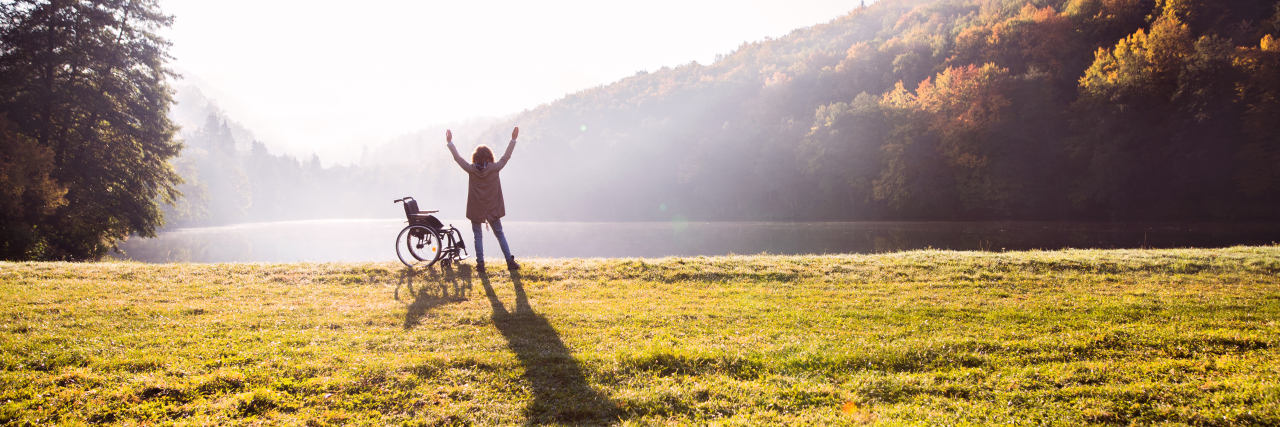It occurred to me today when five people in one day expressed how happy they were to see me on my feet again, that people equate healing with walking. It makes sense really — I mean if someone breaks their leg or back and is confined to a wheelchair until they can steadily learn to walk again, the aim is obviously to get back on their feet. If someone catches a virus or a bacterial infection everybody wishes them “back on their feet” as soon as possible.
• What is Ehlers-Danlos Syndrome?
• What Are Common Ehlers-Danlos Syndrome Symptoms?
What people don’t understand about hypermobile Ehlers-Danlos syndrome (hEDS), is that the condition isn’t linear. We don’t get ill, begin to recover, learn to walk again and then slowly regain strength back to perfect health. No, EDS is a rollercoaster in every sense of the word. It has ups and downs and often loop-the-loops. It goes slow, speeds up, slows down again and if the weather is bad, it shuts down service temporarily. The really interesting thing is that it can do all of those things in one day — one hour even.
If I know I can get from point A to point B in one quick pace without stopping at all and have a seat available at point A and point B, I could manage with crutches instead of my wheelchair. However, “without stopping” means not waiting to cross a road, not waiting in line to pay, not stopping to let someone else pass, not stopping to say hello to someone you know, not stopping to browse items in a shop, not visiting the cash machine. You get the gist.
In short, I don’t always use a wheelchair because I can’t walk. Sometimes I can’t walk, but often I use it because I can’t stand still. When people say, “Oh I’m so glad to see you on your feet again,” they are of course well-meaning, and I don’t want to be rude, so I just nod and smile.
The truth is being on my feet is not an indication of my condition improving. It is really hard to hear all day, “I’m so pleased you don’t need that wheelchair anymore,” while knowing that I still do, and knowing they will be disappointed when they see me in it next time. As though my condition has relapsed.
When a wheelchair user is on their feet, it is not always a sign of improvement. Sometimes it’s simply a sign that they’ve been sat too long and need to stretch. Sometimes it’s simply because it’s raining or they got a ride with someone who doesn’t have a car big enough for their chair. Sometimes I am forced to use my crutches. Sometimes I choose to. It does not mean I am getting better, unfortunately. In reality, not using the wheelchair can make things significantly worse for a while. Likewise, sometimes I choose to use my wheelchair when I am pretty good because it will protect the rest of my week.

My wheelchair is my best friend. It’s taken me quite a while to figure that out myself, but she is. Yes, she’s a “she.” Her name is “Wilma.” Naming her made me like her more. You see, I hated using a wheelchair at first. I saw being a wheelchair user the same as other people view me now, but Wilma is the reason I can still leave the house. She’s the reason I can still visit places with my children, go shopping, keep my independence and go to church. Wilma is a game-changer. Without her I am incapacitated, risking serious injury. I must tape up problem joints and wear my tens machine and braces. Without her, I must fill my body with strong pain medications simply as a precaution.
With her I am me. I get to do at least some of the things I enjoy.
So next time you see a known wheelchair user on their feet, perhaps consider that they may have had no choice in having to leave their wheels at home, or they may have simply made the calculated decision that it is easier to stand and walk to the toilet than to maneuver their wheelchair through a crowd to a disabled toilet. Being on their feet to talk to you about how happy you are that they are standing may actually cause them to be bedridden for days. This is my reality. It’s not a pity story. It’s an attempt to raise awareness.
My condition is a rollercoaster. It cannot be measured by linear standards.
My wheelchair enables me to live life to the best of my ability.
Don’t hate her, please. She really is my best friend.

